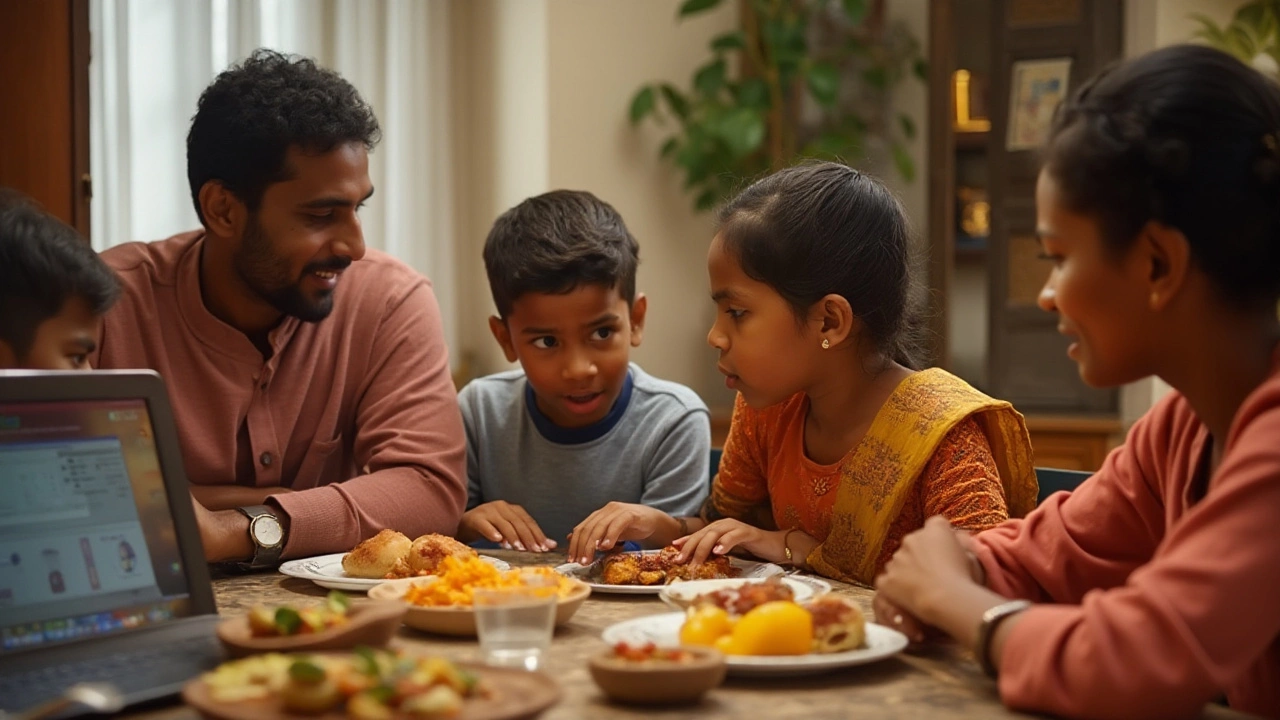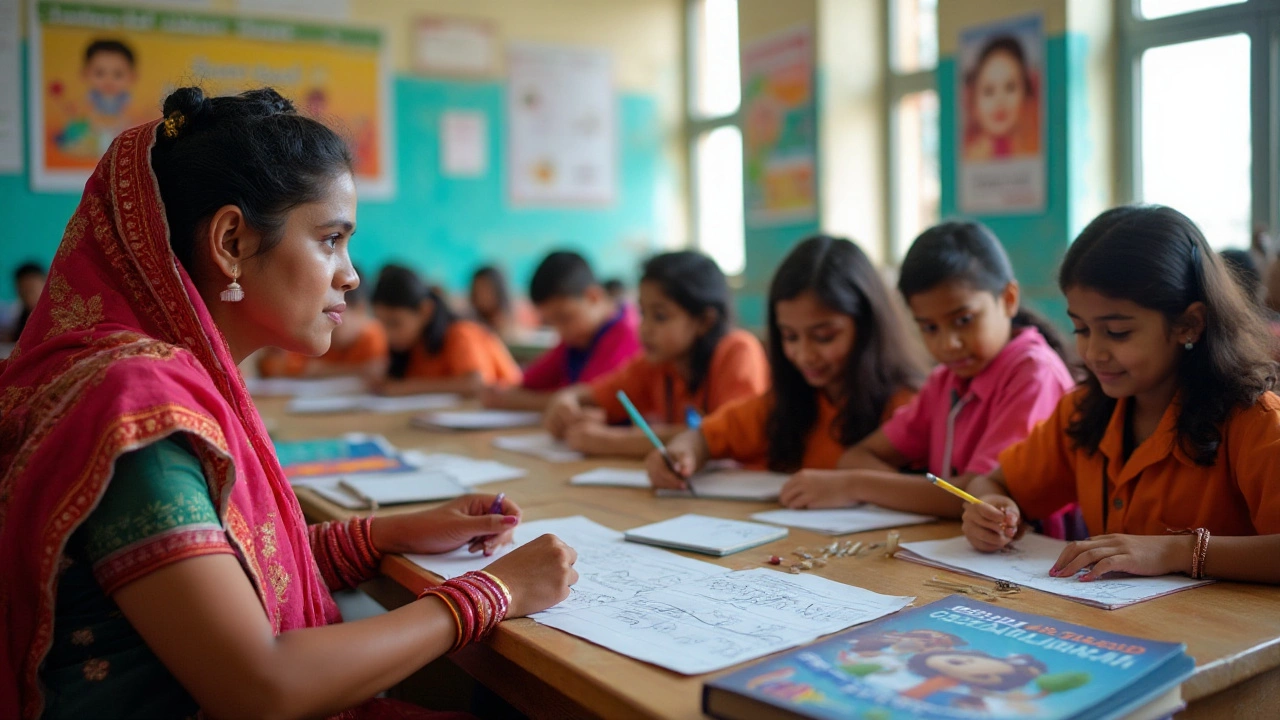When it comes to selecting an educational path for our children, the choice of syllabus often stands out as a significant factor. In India, the CBSE (Central Board of Secondary Education) syllabus is a popular option among parents and educators alike. But why is this syllabus favored by many? What makes it effective and sometimes challenging?
We will delve into the benefits that the CBSE syllabus offers, providing insights into its core structure and the areas where it stands out. Furthermore, we'll address some of the challenges that students and parents might encounter along the way. By outlining practical tips, this guide is designed to help you get the most out of the CBSE educational experience.
Whether you are a parent trying to choose the best for your child's education or just someone curious about the different syllabi in India, this article intends to be a comprehensive resource. Stay with us as we navigate the nuances of the CBSE syllabus, exploring what makes it a preferred choice for many families.
- Benefits of CBSE Syllabus
- Core Structure of CBSE
- Challenges Faced
- Tips for Maximizing CBSE Education
Benefits of CBSE Syllabus
The CBSE syllabus is widely acknowledged for its student-friendly approach, which is designed to boost conceptual understanding rather than rote learning. One of the most compelling benefits is its uniformity across all CBSE-affiliated schools. This standardized curriculum facilitates easier transfers for students who might need to move between cities, a significant consideration for many families in the ever-mobile world of today. Schools across the country follow the same syllabus, and this consistency helps maintain an even level of education, making it easier for students to adjust to new environments. In addition, the CBSE syllabus places a strong emphasis on subjects like math and science, advocating for a method-based understanding of concepts, which is crucial in building a solid foundation for higher education.
Focusing on holistic learning, the CBSE syllabus balances academics with co-curricular activities to nurture various facets of a student's development. This approach acknowledges the importance of well-rounded education that transcends textbook teachings. By incorporating activities like arts, music, and sports, students explore and develop their talents beyond academics, fostering a more balanced and fulfilling school experience. Moreover, due to its emphasis on English and Hindi as primary mediums of instruction, the CBSE syllabus empowers students with linguistic versatility, preparing them for global opportunities and challenges. As such, many parents who are keen on holistic development prefer enrolling their children in CBSE schools.
An additional benefit is how the CBSE syllabus aligns with various national competitive examinations like the JEE and NEET, which are essential for science students aspiring to enter premier institutions like the IITs and medical colleges. The CBSE curriculum is often updated to be in sync with the requirements of these exams, ensuring that students from the CBSE background are well-prepared for these crucial assessments. This seamless integration between school education and entrance exams not only saves time but also reduces the academic pressure on students. "Parents appreciate the dual advantage of school learning in tandem with competitive exam preparation," said an educational analyst.
"The CBSE syllabus is uniquely positioned to cater to both school level education and competitive examination preparedness, making it a prime choice for aspiring students," notes Dr. A. Kumar, a senior education consultant.
Parents also appreciate the continuous and comprehensive evaluation pattern, known as CCE, embedded within the CBSE syllabus framework. This continuous assessment provides a more holistic measure of a student's abilities rather than relying solely on final exams. It encourages students to focus on every aspect of education throughout the year, thus eliminating last-minute cramming habits. The methodology involves regular tests, project work, and practical assessments, allowing students to understand their learning patterns and gradually improve upon them. Because of this, self-improvement becomes a continuous process, making learning a steady and enriching experience instead of a high-pressure activity.

Core Structure of CBSE
The CBSE syllabus is meticulously designed with a blend of theoretical knowledge and practical application, creating a balance that is ideal for shaping young minds. Serving as a backbone for numerous schools across India, it is nationally recognized for its standard and versatility. The curriculum aims to forge a strong foundation for students, nurturing both their academic and personal growth. CBSE has consistently evolved, integrating modern educational practices with tried-and-true methods, making it a dynamic entity within the Indian education system.
At its core, CBSE operates based on a well-defined set of objectives that stem from the National Curriculum Framework. These include cognitive, emotional, and psychomotor development, creating a holistic learning experience. The board ensures that subjects such as Mathematics, Science, and Social Studies are infused with critical thinking exercises while also encouraging extracurricular involvement. What makes CBSE unique is its unification process – it creates a coherent structure that accommodates students across diverse regions without compromising on quality education.
One of the hallmarks of the CBSE syllabus is its focus on Science and Mathematics, laying a foundation that prepares students for various national competitive exams like the IIT-JEE and NEET. It emphasizes cultivating skills that are essential for problem-solving, logical reasoning, and analytical thinking. A strong emphasis is placed on English, both as a medium of instruction and as a subject, fostering communication skills that are crucial in today's world.
"Education should prepare students not just for exams, but for life. CBSE aligns with this vision, encouraging an inquisitive mindset," says Dr. Ramesh Pokhriyal, former Minister of Education.
CBSE's adoption of the Continuous and Comprehensive Evaluation (CCE) is a progressive approach toward assessing and improving student performance. By shifting from conventional examination systems to a more consistent evaluation model, CBSE schools focus on both scholastic and co-scholastic growth. This dual assessment structure helps in tracking a child’s development more effectively, addressing their strengths and areas for improvement.
With regular updates and changes introduced in the syllabus by CBSE, it ensures that the curriculum remains relevant with the times, adapting to the burgeoning needs of the educational sector. As part of its structural mandate, CBSE includes vocational and skill development courses in its offerings. Such choices recognize the diverse interests of students, helping them gain practical skills that are aligned with real-world demands.
The CBSE's structure also places a strong emphasis on incorporating technology into learning. Digital literacy is no longer an option but an integral part of the education system. By introducing computer science early in the education process, the syllabus aims to equip students with essential digital skills. The progressive framework supports experimental learning strategies, encouraging active participation rather than passive learning.

Challenges Faced
Adopting the CBSE syllabus brings with it a set of challenges that both students and parents need to navigate carefully. One of the primary concerns is the extensive curriculum that can feel overwhelming at times. The syllabus covers a vast array of topics across various subjects, demanding a significant amount of time and dedication from students. The continuous evaluation system, while beneficial in reducing exam stress, can also put persistent pressure on students to perform consistently well throughout the year. This can lead to burnout if not managed properly.
Another difficulty lies in the competitiveness inherent in the CBSE system. With a large number of students enrolling in CBSE schools, competition is stiff. Achieving high grades requires constant effort, and this pressure can sometimes lead to stress or anxiety in students. Parents often find themselves struggling to strike a balance between encouraging their children to perform well academically and ensuring they have a fulfilling school life. As per a survey conducted by the Indian Council for Research on International Economic Relations, around 37% of students feel stressed due to academic pressure.
"Education is not the filling of a pail, but the lighting of a fire," said W.B. Yeats, highlighting the need to foster a love of learning rather than a focus solely on grades.
Then there is the challenge of developing skills beyond rote memorization. While the CBSE syllabus aims to promote analytical thinking, there are instances where students might feel encouraged to memorize rather than understand the concepts deeply. This is particularly true for science and mathematics, where understanding the underlying principles is critical. To tackle this, engaging teaching methods and practical learning approaches must be integrated into the educational process.
Some schools may face infrastructural challenges in implementing the CBSE's ideas and policies to their fullest potential. For example, the CBSE encourages experimenting with digital and practical learning aids. However, schools with budget constraints may struggle to provide these facilities, leading to an uneven educational experience. This isn't just an issue for schools; parents, too, often need to step in to provide supplemental resources or arrange for tutoring to fill gaps in learning.
Addressing Language Barriers
In India, where linguistic diversity is prominent, the language of instruction in CBSE schools could pose difficulties. English is predominantly the medium of instruction, but not all students may be fluent. This can lead to a gap in understanding, especially among students from non-English speaking backgrounds. CBSE schools are working on addressing this, yet the challenge remains significant. Providing additional language support can be a solution, but it is an area still needing much attention and effort to overcome the disparities across regions.

Tips for Maximizing CBSE Education
Incorporating effective strategies into your child's study routine can make a world of difference when it comes to their experience with the CBSE syllabus. First and foremost, understanding the core structure of the CBSE is essential. This syllabus is known for its clear and concise organization, which helps students develop a strong foundation in each subject. Parents can assist by helping their children create a structured schedule that allocates time for each subject according to their strengths and weaknesses. This approach ensures that all subjects are given due attention, while allowing extra focus on areas that may require additional practice.
Another strategy involves fostering a love for reading beyond the textbooks. Encouraging exploration of supplementary materials like magazines, newspapers, and educational websites can broaden a student's perspective. These resources often provide practical examples and real-world applications of the topics covered in the CBSE syllabus, making the learning experience more engaging and relatable. Additionally, solving previous years' board papers can be beneficial. These papers familiarize students with the exam format and question types, reducing exam anxiety and building confidence.
Effective use of resources is also critical. Parents and teachers can emphasize the importance of utilizing NCERT textbooks, which are designed to adhere closely to the CBSE curriculum. These textbooks often include exercises and practice problems that challenge students' understanding and critical thinking skills. Furthermore, leveraging digital technology, such as online education platforms and apps that offer interactive quizzes and video lessons, can cater to different learning styles and provide an edge in grasping difficult concepts.
Creating a balanced routine that includes time for extracurricular activities is equally important. Being involved in sports, music, or art not only fosters creativity but also contributes to a well-rounded education. Encouraging children to participate in group discussions or study circles can enhance their social skills and allow them to exchange different perspectives. These activities can also serve as excellent stress relievers, improving overall mental health during rigorous study periods.
According to Dr. A.P.J. Abdul Kalam, "Excellence is a continuous process and not an accident," emphasizing the importance of consistency in educational pursuits.
Finally, parents should aim to be supportive yet not overbearing. Maintaining open communication with teachers helps ensure that parents and educators are aligned in their expectations for the child's performance. Parents can offer encouragement and regular feedback without placing undue pressure on their children, which helps maintain a healthy learning environment. In today's fast-paced world, patience and understanding are key to nurturing a child's educational journey, ensuring that they not only perform well but also genuinely enjoy the process of learning.
